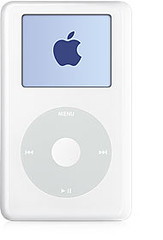
Stephen Friend has the first hand-built fuel cell-powered house in the US. No, not another hopeful boil-your-own-yogurt demo for an impractical technology, but a real, sustainable achievement that makes its own hydrogen in a cedar shed out back. And it has a huge advantage over electric systems favored by his neighbors on Stuart Island, an off-the-grid Pacific Northwest paradise in Washington’s Puget Sound. Most residents there use solar power but must rely on noisy backup generators as well, since their batteries don’t hold enough energy to get them through the winter. So with the help of two buddies, Friend, a Merck vice president and pioneer in digital gene arrays, drew a back-of-the-envelope plan for an energy storage system that extends the life of battery banks. In 2004, they started rigging up a Rube Goldberg contraption that uses solar panels and electrolyzers to generate hydrogen and allows Web-based monitoring of its proton-exchange-membrane fuel cell. In late 2006, a bemused but impressed inspector granted state approval. Now the system, which they built for around $50,000, taps any surplus solar electricity to fill a 500-gallon hydrogen fuel tank, enough reserve for about 14 days’ worth of power (a second tank can be added to double that capacity). Friend thinks of the setup as sort of a TiVo for energy — bank hydrogen during the summer, then consume as it’s needed.

1) GENERATE SOLAR POWER
Jason Lerner, an alternative-energy expert and family friend, installed the home’s photovoltaic panels (cost: around $13,400) in the front yard. The cells pump out 1.6 kW during the sunniest hours of the day, which is just under a typical load for the Friend family.
2) TURN WATER INTO H AND O
Two laboratory-grade electrolyzers (Hogen GC 600 units at $7,900 each) run on solar electricity and water to make 0.3 gallon of hydrogen per minute, which is then forced into a steel tank at 200 psi. A second tank may be added to double  the capacity to a month’s worth of power.
the capacity to a month’s worth of power.
3) LEARN TO PLUMB FOR H
High-end stainless steel tubing prevents the plumbing from corroding. (Hydrogen ions are the active ingredient in acid.) A blast of nitrogen can be used to remove the air from an empty 500-gallon propane tank, which can then be carefully filled with home-brewed hydrogen.
4) TURN H AND O BACK INTO H2O
A 148-pound, 48-volt fuel cell combines hydrogen with the oxygen in air to charge the battery bank. An inverter converts the DC electricity to AC for the home’s 110-volt system. Find this gear at www.fuelcellstore.com. The builders caution that these products aren’t perfect.
5) AUTOMATE AND MONITOR
The crew connected system switches to relays controlled by battery voltage. After 20 minutes sans sun, the electrolyzers shut down, and the house is powered by the fuel cell. A satellite link transmits reports on voltage and tank capacity, and a hydrogen sniffer checks for leaks.
For more information please visit the links in the referneces...
References
http://www.wired.com/wired/arcive/15.03/play.html?pg=9
http://www.siei.org/mainpage.html
http://www.fuelcellstore.com/



















